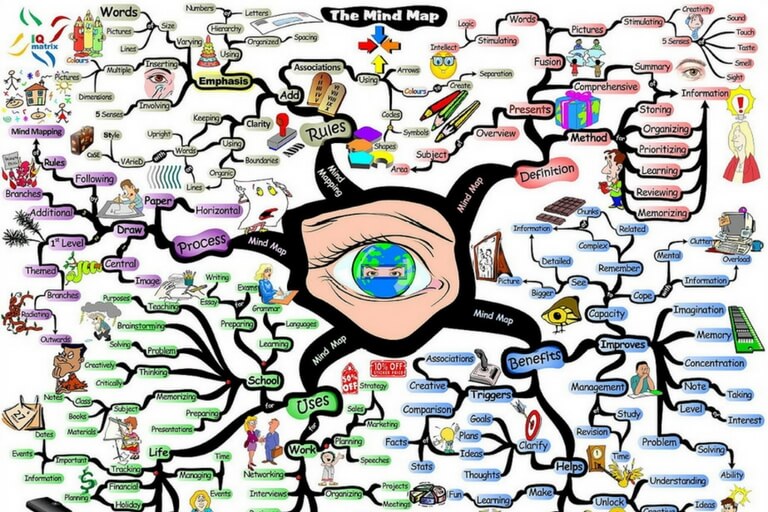Teaching your kid how to learn is no easy task. It takes patience, a lot of love, and trial and error, too.
And since you’re on this post, you’re probably asking: “Are there learning strategies that I can teach to my child?”.
YES! In fact, a couple of these strategies. However, we’ve rounded up three of the most effective learning strategies that you can share with your child. If you haven’t heard about any of these, you’re in for a learning session yourself.
The First Of Our Three Learning Strategies? Spaced Repetition
Before we define what spaced repetition is, let’s talk about the forgetting curve first as the two are related to each other.
You see, the forgetting curve represents memory retention as a function of time, an idea first postulated by Hermann Ebbinghaus.
As time passes after learning new material, we forget much of the information if we don’t review what we’ve learned.
The brain works in such a way that, when it stores new information in our long-term memory, we need to review the material a few times to make it stick. Doing so increases the chances of finding it easier and quicker when required, just like in an exam.
Spaced Repetition, on the other hand, mitigates the effects of the forgetting curve.
The process involves timed reviews (with enough spacing) of what you’re trying to learn.
For instance: repeating a math equation twenty times over the course of a day (before the exam) is less efficient than repeating it ten times over the course of a week.
The reason why this happens is that the brain needs time to form the synaptic structure and connections surrounding the new information before it’s deeply embedded in our long-term memory.
Teaching your child this technique will allow him or her always to be one step ahead of the game.
Ultimately, he doesn’t have to cram a few days before his exams. It doesn’t work, and it’s not a good study habit.
Here’s how it’s done.
-
- Within 20-24 hours after your child has learned new information, let him review his notes. In doing this, ask him to look away from his notes after a quick peek to try and recall the important points.
- Within a day after the first step, ask your child to recall the information without relying on his notes as much. You can also use flashcards to test how well he can remember the same information.
- After step 2, ask your child to quickly recall the material every 24-36 hours for the next several days. It doesn’t have to be lengthy, and again, flashcards work well for this practice. Make it seem like an exam, and you can just put the answers on the back of each flashcard.
- Repeat step 3 several days before the exam. Ideally, your child should study one week before the ‘big day.’ This will allow his brain enough time to reprocess the information.
Feynman Technique
The Feynman Technique is a four-step learning method developed by American physicist and Nobel Prize in physics winner Richard P. Feynman.
This technique is designed to help people learn just about anything, including topics that are usually hard to remember or understand.
The concept is quite simple.
This technique is a mental model to convey information using concise thoughts and simple language. For your child, this is extremely important especially in learning complex subjects (for his age).
You can use the Feynman Technique to:
- Help your child understand ideas complicated concepts
- Remember ideas that he or she understands but forgets during exams
- Study efficiently before an exam. Using this technique will allow your little tot to pick up an important concept or lesson in 20 minutes that will stick with him or her for years.
Here are the steps involved.
Choose Or Write Down The Lesson Or Idea Your Child Needs To Learn
Using a piece of paper and a pen, ask your child to write down what he wants or needs to learn. For example, “What makes a dog move?”.
Let Your Child Teach Or Explain The Concept Using His/Her Own Words
Using the same example, tell your kid to pretend that he’s the teacher and you are his student.
Let him explain the concept to you using his own words and understanding of it. It’s important that he explains it to you the easiest way possible and it has to be his own.
If The Explanation Seems Shaky, Go Back To The Source
It’s not cheating. Your child just needs to revisit his notes or book if some parts seem to be giving him a hard time.
Rewrite The Complex Lesson Simpler Terms And Use Analogies
It’s quite easier for a child to master this technique compared to an adult. That’s because children’s brains have a more straightforward understanding of things than adults.
Mind Mapping
Mind mapping is a visual thinking tool that can be applied to all cognitive functions, especially memory, learning, creativity, and analysis.
It’s a creative and logical way of ‘mapping out’ your ideas, hence the name.
Once your child masters this technique, he or she will be able to engage in whole brain thinking and allow them to see the bigger picture (or pictures).
Mind-mapping can also help them clarify their thoughts, simplify complex ideas, and easily memorize information; all the while encouraging creativity so kids never get bored!
So how do you teach your kid this learning strategy? The first step is to grab some colored pens or pencils along with a blank piece of paper. Remember to turn the paper sideways to make mapping easier.
Write Down The Central Idea
The central idea is the starting point of the mind map, and you need to put it on the center of the page.
Be sure to include an image that represents the topic of the mind map as the brain responds better to visual stimuli.
Add Branches To The Map
The next step is to add subtopics by extending branches from the central idea. Note that you can have as many subtopics as you want so long as you have the space. Each subtopic, can then be further ‘branched out’ for additional details.
Add Keywords
Ideally, every branch should have a keyword. Doing so will allow your kid to easily recall a higher number of associations to that branch compared to using multiple phrases or keywords. One word per branch also helps in easily breaking down information into core topics and subtopics.
Put Colors On Your Mind Map
Color coding the branches does not only help make the mind map look more appealing and fun. It will also help your child categorize, highlight, analyze, and identify more information quickly.
Besides, monochromatic images are boring to look at!
Don’t forget to add images
We’ve talked about this before: the brain responds better to visual stimuli. So you need to add pictures to the mind map for best results.


